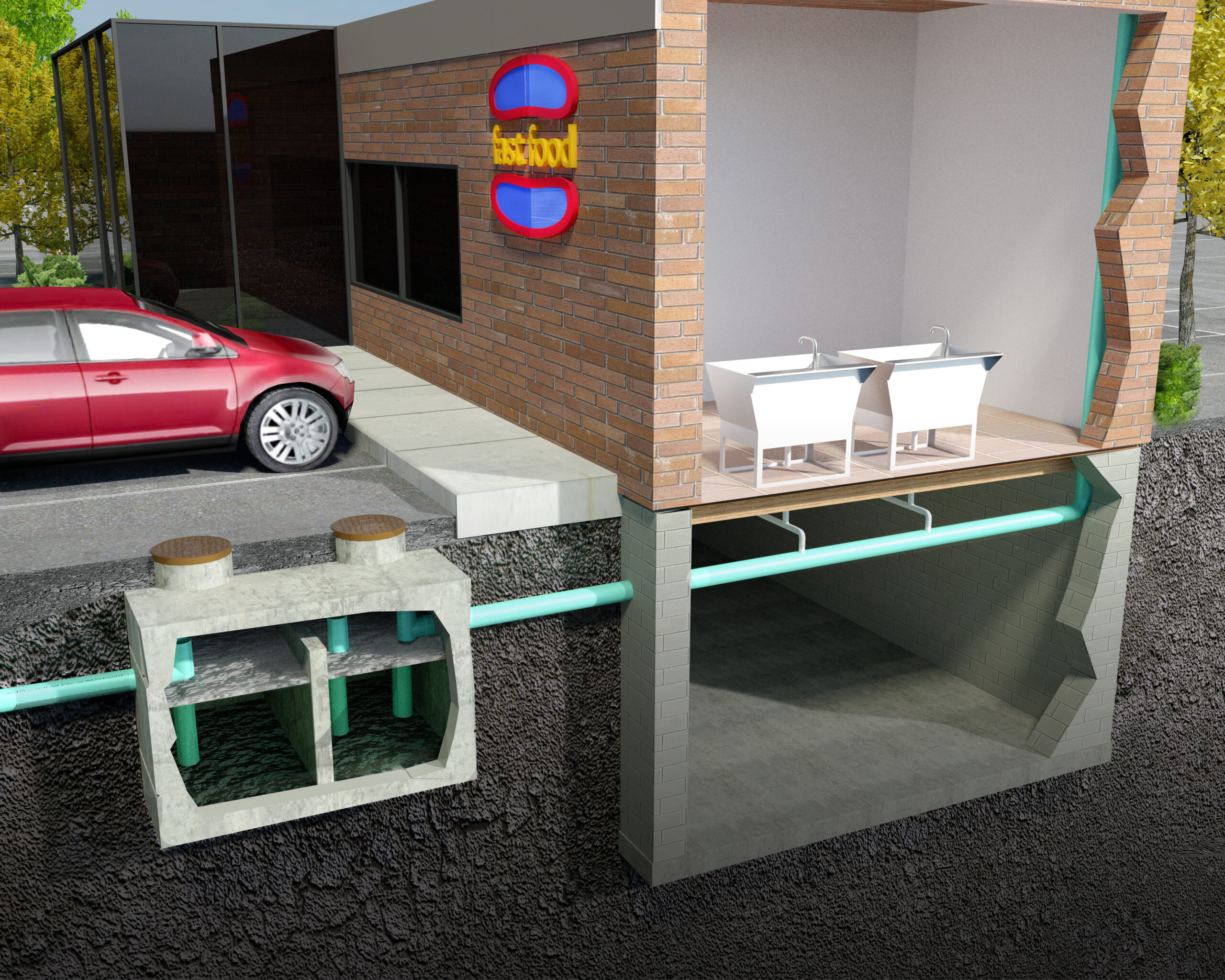
How Does A Grease Trap Work?
In case you didn’t know, oils, fats and grease are bad news for your drainage system.
The issues that arise from their deposition may well cost you hundreds of dollars to fix. Moreover, they can clog the entire drainage system of your neighbourhood and create problems in water treatment facilities.
Just like you need to avoid blockage in your arteries to stay healthy, it’s important to care for the drainage system. And this is where grease traps come in! They prevent fats, oil or grease from passing the pies to ensure unobstructed water flow.
Wondering how it actually works? Then we have got your back as we have explained the overall operational process of grease traps in the following sections, so continue reading!
What Is A Grease Trap?
Grease traps have been around for centuries and are alternatively known as grease converters, interceptors, recovery devices, or catchers. They are used in different setups, including:
- Cafes
- Restaurants
- Takeaways
- Hotels
- Pubs, inns, and bars
- Bakeries
- Colleges and schools
In simple words, a grease trap is a repository into which fats, oils and grease (FOG) flow before entering the drainage system. The receptacle traps the FOG and lets the clear water to pass through.
How Does It Work?
The basic principle on which grease trap works is that vegetable oils (grease) and animal fats are less dense than clear water and thus do not mix. Hence, the oils and fats float on top of the water.
When wastewater flows through this trap, the flow rate is reduced to allow it to separate into three distinct layers. The grease and oil, which have the highest densities, float on the top and are trapped by a baffle system. On the other hand, fats and other solids have low density, making them settle at the bottom and allowing clear water to escape from under the outlet baffle.
You’ll also find strainers in many grease traps that accumulate solid debris and reduce the amount of solid deposits at the bottom of the time. However, the grease and solids that continue to deposit might start escaping through the outlet and cause a blockage. Therefore, it’s essential to clean the trap periodically.
Now, the time between cleaning or pumping out the trap depends on the amount of wastewater generated and the size of the trap. However, it usually needs cleaning every 2-4 weeks on average.
You can also extend the cleaning time by adding a biological grease treatment fluid into the system. It is formed by a combination of bacteria, enzymes and nutrients to break down FOG, ultimately enhancing the performance of the grease trap.
Different Types Of Grease Traps
Depending on how they work, grease traps are mainly of three types: automatic, passive hydromechanical and gravity.
A. Passive Hydromechanical
These grease traps are generally used in small establishments like cafes, takeouts etc., mainly due to their low upfront costs and variation in sizes. This means they can be installed in most sinks, and the larger ones are especially suitable for sinks that produce large quantities of wastewater.
The first passive hydromechanical grease traps were manufactured in 1885, and even current models are based on the elementary design. They are generally made of stainless steel or plastic and require manual clean up regularly.
B. Automatic
Automatic grease traps function in the same way as traditional passive traps, but they heat and skim FOG on a predetermined schedule. The FOG that has been skimmed is transferred to a collector bin for safe disposal.
Automatic grease traps work according to the amount of FOGs produced on a periodical basis, so owners don’t have to worry about measuring the grease level.
Similar to passive traps, they are available in various sizes to fit in different sink sizes. Although the upfront cost is on the higher side for them, they are more efficient and require less servicing and low long-term running costs.
C. Gravity Grease Traps
These grease traps are generally large in-ground tanks made of fibreglass, concrete or steel. Their operating principle is similar to that of passive hydrochemical models but they come with larger capacities to handle more amounts of wastewater. It’s essential to pump gravity traps on a periodical basis, which is best done by professionals.
Who Needs Grease Traps?
In Australia, there are regulations and legislations outlining the best practices for the proper disposal of oils, fats, grease and starches.
For example, the Building Regulations mandate that commercial kitchens serving hot foods, which have their drainage system connected to the main drainage line of the area must install a grease trap. Restaurant owners can face numerous challenges when it comes to maintaining high-quality service and keeping the setup optimally hygienic.
But cleaning and washing crockeries, equipment and kitchen utensils can cause the residual FOGs to run down the drains, thereby forming unpleasant odours and pipe blockages. So, if you’re a commercial kitchen owner, it’s essential to choose the right grease traps, which best suit your requirements.
Having a perfect grease management system allows you to comply with existing standards and is vital for maintaining smooth and effective kitchen operations.
Final Words
We hope to have helped you understand how these grease traps work and what should be done to keep them in good condition. But it’s better to take help from a professional plumber when installing these.
A professional will also help figure out the right sized grease traps according to your plumbing setup, as this can be a challenging affair if you don’t know much about sinks and drains. Apart from properly installing the interceptor, they will keep you informed about how often to clean the trap regularly and conduct regular maintenance to keep it optimally functional.
With this, it’s a wrap for today. We will see you again. Goodbye and take care!